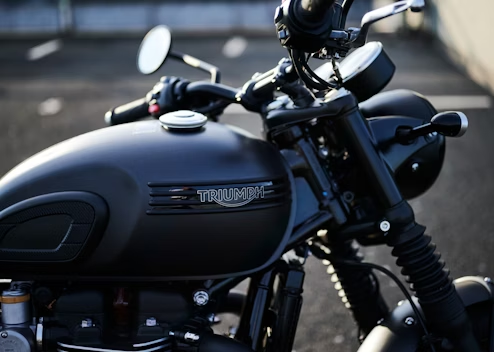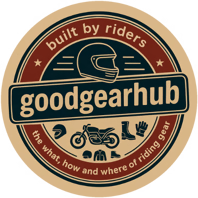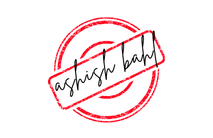
In This Blog
- When did it start, influences, icons and more
- Motorcycling culture in the United Kingdom
- Be part of the culture
British Motorcycling: A Passionate Affair with the Open Road In the UK.
Two wheels beat a steady pulse along meandering country roads and scream down legendary tracks like the Isle of Man TT. I’m diving into the colorful tale of British motorcycling, touching on its offbeat origins, relentless energy, and the ripple effects felt around the world. Almost a century ago, the country’s affection for motorbikes began in a refreshingly modest way.
Back in the 1920s,
brands like Triumph, Norton, BSA, and Royal Enfield started putting together machines that weren’t just meant for a quick dash, but for the tough everyday grind too. Those bikes, celebrated for their rugged build and hand-driven character, quickly turned Britain into a beacon for bike lovers. Generally speaking, that knack for blending durability with a spirited ride still strikes a familiar chord. Some rides have become so iconic that it’s easy to see why Triumph and Norton are names on everyone’s lips.
Consider the Triumph Bonneville,
first unveiled in 1959 and still adored for its classic style and punchy engine, set shoulder-to-shoulder with the Norton Commando, whose uniquely crafted frame and racing fire won it a devoted following. The swinging 60s and 70s saw an explosion of DIY custom builds—youngsters in places like London and Birmingham started tinkering with their bikes, morphing them into edgy café racers that almost served as a defiant badge of honor. In a way, that raw performance got casually paired with a twist of nonconformity, giving rise to these memorable modifications.
You can’t really chat about British biking
without a shout-out to the Isle of Man TT. Since it first roared to life in 1907, the race has attracted those bitten by the thrill of danger and breakneck speed. Riders hurtle along public roads, contending with razor-sharp bends and sudden corners, fueled by a mix of daring skill and—let’s be honest—a pinch of luck. Generally speaking, the TT serves as a rough testing ground for fresh ideas in engineering; tweaks to suspension or braking systems get tried out long before they hit showrooms. It’s a spectacular, if somewhat unruly, homage to the nation’s deep-seated love for motorcycles. There’s also a whole other world to these bikes—the community that moves just as much as the machines.
Riding in Britain isn’t done in isolation;
It’s about coming together in clubs that have been around since the early 1900s. There’s something unmistakably human about sharing long rides, swapping old stories, and even debating whether a vintage engine trumps a modern one. Think of the Ace Café Reunion in London—a quirky tribute to a spot once buzzing with the wild energy of 1950s café racers. Riders from near and far gather there to celebrate classic rides and the spirited vibe of a freewheeling past. And then there’s the Brighton Burn-Up, a rally with an unrefined charm where enthusiasts revel in the sheer unpredictability and joy of British biking. Every year, thousands hit the roads, and don’t forget the London Motorcycle Show—a massive meetup where you can scope out everything from the latest bike tech to fresh gear and some truly offbeat accessories. The UK scene still buzzes with life, even if some say the glory days of classic British motorcycles are behind us.
Generally, you can spot an energetic mix of riders
Young and old alike—zipping along in bustling London or wind through the quiet, twisty lanes of rural Scotland. Here, riding isn’t merely a pastime; it’s seamlessly woven into everyday life. Big names still cut a striking figure, with Triumph and Royal Enfield leading the pack. Look at Triumph’s current range—the Street Triple and the Tiger 900 are great examples. They mix that ever-familiar British aesthetic with today’s cutting-edge technology, drawing in a fresh and adventurous crowd. It’s a unique combination that feels both comfortingly traditional and surprisingly modern at the same time.
Then there’s the rise of custom builders sprouting all over the country.
There’s a genuine burst of creativity on display—from reinvented café racers and bobbers to some intriguingly offbeat creations. It’s a vibrant, unpredictable scene that adds an extra layer of character to the already dynamic world of British motorcycling. Bikes like scramblers, choppers, and other custom rides get a real makeover—folks take pride in turning them into personal works of art, each ride a small act of defiance on wheels. It’s not just about moving from A to B; for many, riding pulses with a raw sense of freedom and a bit of rebellion, as if each journey tells its own quirky story. Sometimes you’re zooming down a lonely country lane, other times you’re just meeting up with friends on a spur-of-the-moment jaunt—each moment carrying that comfortable, familiar vibe. There’s also this unmistakable warmth in the UK biking scene that you can’t help but notice.
goodgearhubwrap
Whether you find yourself drawn to long-distance touring, the electrifying rush of track days, or the charm of off-road escapades, there’s almost always a spot waiting for you in this eclectic, sometimes delightfully messy crowd. At the heart of it all, riding here isn’t simply about travel—it’s a patchwork of experiences that, generally speaking, helps shape the nation’s ever-evolving story. You might be fascinated by the vintage bikes that carry a touch of nostalgia, or perhaps the adrenaline of a legendary race like the Isle of Man TT calls out to you. Others get their kick from the unpretentious camaraderie of local meet-ups; each angle subtly adds to the unique character of British motorcycling. From those classic mid-century bikes that still tug at our hearts to today’s bold, off-the-wall innovations, the vibe of British motorcycling crackles with a hard-to-define energy. That uncommon mix of adventure, freedom, and even a smidge of brotherly misfit charm turns every ride into a kind of imperfect celebration—messy, authentic, and very much like life itself.

